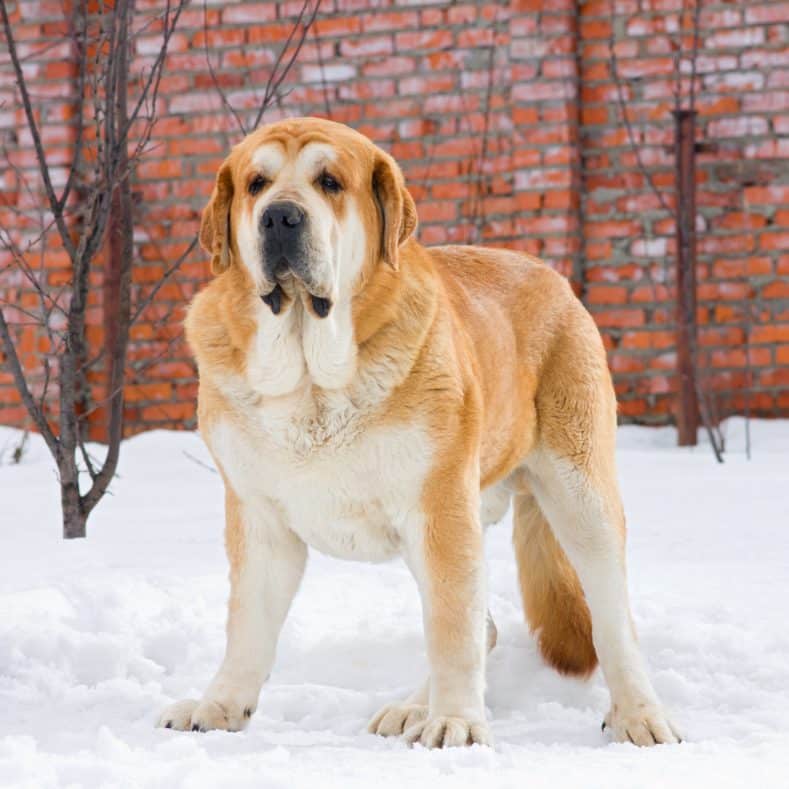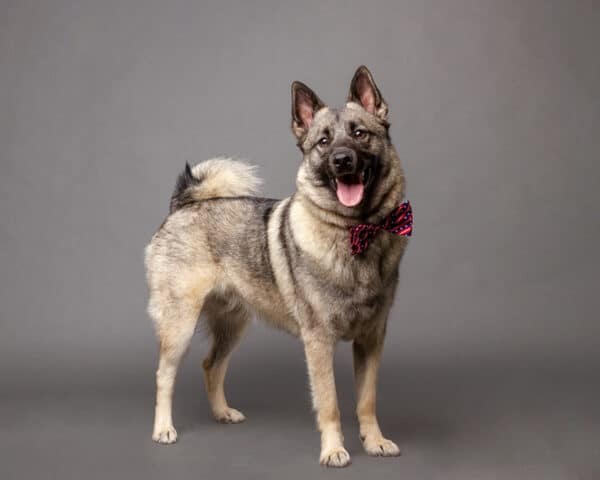Quick Facts
- Weight: 145 to 170 pounds (males can weigh up to 265 pounds)
- Height: 28 to 35 inches
The Look of a Spanish Mastiff
The Spanish Mastiff is a bit like a Saint Bernard, with heavy jowls and loose skin and a look of having had too much brandy. They are immense dogs, with some adult males weighing as much as 265 pounds.
They have a typical Mastiff dewlap (hanging skin) on their necks; deep-set eyes; strong muzzles and chests; and long, low-hanging tails. The coat is dense, short, and woolly.
The Spanish Mastiff can come in red, fawn, wolf-grey, yellow, or black with black or brindle markings. They often appear contented and disinterested, but are really always alert.
Traits
- Massive size
- Variances in looks in different regions in Spain
- Deep, growling bark
- Very loose skin, especially the dewlap (neck)
- Laidback, almost inebriated expression
- Lifespan: 10-11 years (some have made it to 14 or a little longer)
Ideal Human Companion
- Families with older children and without other pets
- Suburb or country dwellers with large fenced-in yards
- Those who have experience with dogs
- Those who want more of a guard dog than a companion
- Those who go to the gym regularly (strength is needed!)
What They Are Like to Live With
The Spanish Mastiff is very independent by nature, like most livestock guardian dogs (LGDs). If you’re looking for a pooch to worship you or to play Frisbee with, this breed is not for you. Spanish Mastiffs are foremost working dogs, and those kept as companions are aloof. If you like living with a noble, massive guard dog that isn’t much trouble, this could be the breed.
Spanish Mastiffs are quite laid-back compared to other LGD breeds. Males tend to bond more with family members than females, and all Spanish Mastiffs are extremely loyal to their people.
Owning Spanish Mastiffs requires tolerance of snoring, slobbering, and drooling. When they’re not snoring by your side, they need moderate exercise, always at a fairly slow pace. They are low-maintenance, needing only to be brushed regularly and bathed occasionally.
Things You Should Know
The Spanish Mastiff sees strangers as a threat. Having control over your dog is essential; unless you stop your dog, it will follow through when it senses a threat. Luckily, these dogs bark deeply as a warning to “intruders” before taking any action.
Because of the Spanish Mastiff’s enormous size, they often suffer hip dysplasia and bloat. Entropion (inverted eyelids) is also frequent.
Spanish Mastiff History
The Spanish Mastiff originated in western Spain in the Estremadura region. Its ancestor is thought to be the first mastiff-type dog, which appeared nearly 2,000 years ago. It has been crossed with many breeds since then. The Spanish Mastiff began to appear in dog shows in the early 20th century, and its standards were recognized in 1946.
Today, Spanish Mastiffs are used mostly as working dogs, though they make fine additions to the family if you don’t mind their aloofness.





